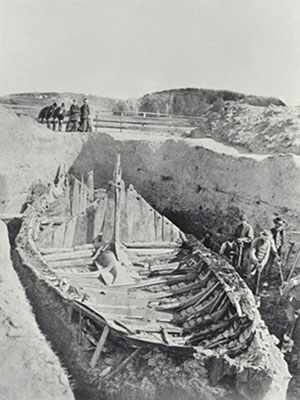
For a number of years I have had the idea that I would like to build a radio controlled sailing boat. Hopefully this site will detail my progress in my attempt to achieve that goal…
I’d looked at a number of modern designs for a boat but I’ve always had a keen interest in history. I had considered (and still am considering) building a Royal navy ship from the Napoleonic wars era, perhaps a small sloop or similar. The technical aspects of controlling a ship rigged sailing vessel via RC were a bit too daunting though so I decided to look at a simpler, earlier period for inspiration.
This search led me to another period of time that I’ve had an interest in for a lot of years… and so my research into the viability of building a radio controlled Viking longship started.
![Karamell [CC BY-SA 2.5 (https://creativecommons.org/licenses/by-sa/2.5)]](https://gokstad.org.uk/wp-content/uploads/2019/05/Gokstadskipet1-768x1024.jpg)
The Gokstad ship was excavated in the late 19th century and is today one of the restored ship housed in the Viking Ship Museum. Basing my model on a genuine artefact from the era (9th century) seemed like a good option. The design of the ship suggests it would have been a fast ship suitable for a number of purposes, from warfare to trade.
It strikes me that the Gokstad longship was perhaps the pinnacle of Viking ship building and was a “genuine” all round ship, perhaps used for raiding rather than a cargo or a “show boat”. It is one of the Karve ships, a small longship design that could be used for raiding or cargo transport, capable of crossing oceans. In 1893 a replica of the Gokstad, simply christened “Viking” made the journey, crossing the Atlantic Ocean from Norway to Chicago, taking around 4 weeks.
Prior to starting the build I spent a lot of time researching the ship and also a number of replica ships that have been built along the same lines. Of particular interest for a working model is the rigging and sail control of the ship.
The ship was clinker built (as were all Viking ships/boats as far as I know) and I intend to build my model in a similar fashion. Although I won’t be using nails (iron or wood) to hold my ship together I’m hoping that the end result will use many of the original building methods.
The scale of the planned model would mean the “nails” would be far too small to be practical with a head size of less than 1mm and a body diameter of around 0.3mm.
